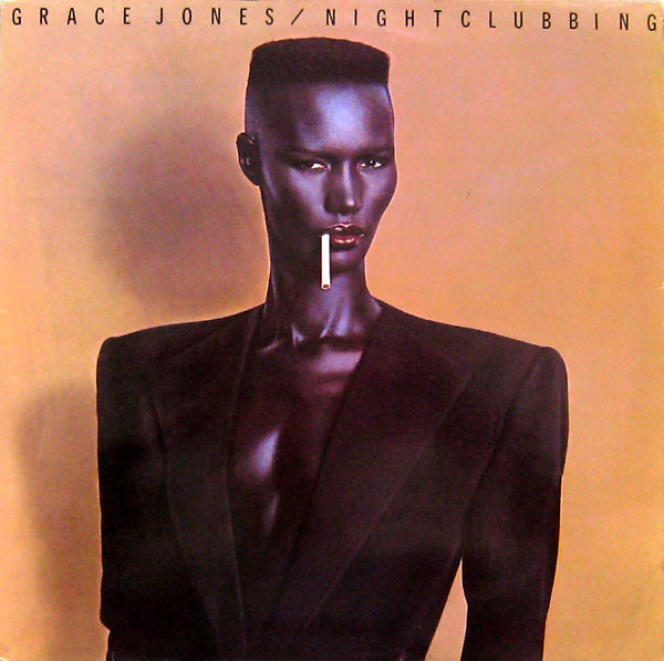Din his bestseller, The Woman’s Dress for Success (Warner Books, 1977), John T. Molloy contributes to theorizing an emblematic concept of the 1980s: the power dressing. Dressing for power means expressing confidence, authority and competence in your clothes by adopting the codes of the dominant class.
In short, show that you have the shoulders, in particular by wearing a blazer jacket enhanced by paddings, is supposed to allow women to gain visibility in a space dominated by male representations, like Melanie Griffith in Mike Nichols’ iconic film, Working Girl (1988).
Less Wall Street than dancefloor, Grace Jones established herself as one of the night icons of this glitzy era. On the album cover Nightclubbing (nineteen eighty one), she appears photographed by Jean-Paul Goude: geometric haircut, oversized jacket and right-angled shoulder pads. Without a word or a smile, as disturbing as it is intimidating, on the side of power rather than power, she goes further than John T. Molloy and makes it clear that there is no longer any question of smoothing corners.
The fashion of the 1980s was inspired by that of the 1940s, another period when women entered the job market en masse. Because, if shoulder pads were introduced at the beginning of the 1930s by Elsa Schiaparelli (1890-1973), it was during the Second World War that female silhouettes were redesigned and the size of clothing widened. Under the influence of military costumes, they say. But we could also pull another thread, that of zoot suit. This costume consists of loose balloon pants and a jacket with exaggerated shoulders as described by one of its fans, Malcolm X: “Deadly coat with drapes, pleats everywhere and reinforced shoulders like the walls of a padded psychotic cell. »
Popularized in the late 1930s by African-Americans in Harlem, the zoot suit is quickly adopted across the country by young people from minorities and, in particular, by those of Mexican origin, in California. These pachucos, Or pachucas for girls, display their refusal of the codes of the dominant class and the (fabric) restrictions imposed by the war, and thus invent a new elegance.
“The uniform of delinquency”
The first fashion phenomenon to emerge from youth (linked to jazz and swing and which will infuse France with zazous), the zoot suit becomes a social marker demonized by politicians, who made it an unpatriotic symbol and even, for Los Angeles Times, “the uniform of delinquency”. This will lead to the infamous Zoot Suit Riots, riots led by soldiers who, in June 1943, in Los Angeles, lynched on a very large scale people whose sole fault was wearing this costume.
The singer and jazz bandleader Cab Calloway, Kid Creole and the actor Jim Carrey in The Mask…if the carriers of zoot suit in popular culture can be easily identified, representations of pachucas, these Mexican-American working class women who by putting on this suit and their XXL jacket challenged both systemic racism and gender norms.
